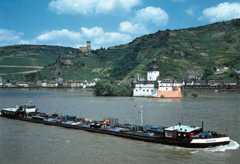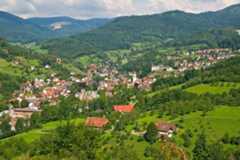- Germany from 1250 to 1493
The visual arts
Our editors will review what you’ve submitted and determine whether to revise the article.
Germany has a strong, rich tradition in the visual arts. In themedieval era, the reign ofCharlemagne introduced German artists to the three-dimensionality of Roman art. Paintings and sculptures, often in theGothic style popularized inFrance and Germany, were generally made to decorate churches, andilluminated manuscripts andstained glass were also created. In the 15th century, the design ofaltarpieces, which combined the arts of painting, sculpture, and architecture, became a popular pursuit, and the rise ofbookprinting led to the design of many fine woodcut illustrations. In the late 15th and the 16th centuries, a generation of German artists emerged that includedAlbrecht Dürer,Lucas Cranach,Matthias Grünewald, andHans Holbein the Younger, all of whom worked in a style influenced by the ItalianRenaissance; their work represented a golden age in German art. During this era, the ProtestantReformation of the 1520s brought about the destruction of some art that was deemed idolatrous and led to moresecular subject matter, as seen in the numerous self-portraits by Dürer.
News•
Subsequent generations of artists explored French and Italian variations on theBaroque andRococo, but German art did not develop a definite national character again until the mid-18th century, when a staid Neoclassicism, advocated by theoristJohann Winckelmann and a series of new art academies, took hold. At the turn of the 19th century,Romanticism blossomed, perhaps best exemplified in the work ofCaspar David Friedrich andPhilipp Otto Runge, who in the first quarter of the century explored nature with a passionate, almost religious fervour. By the late 19th century, artists began to form groups that seceded from theconservative teachings and exhibition opportunities of the academies. Nevertheless, the staid Neoclassical style mostly dominated until the late 19th century, when secessionist groups formed inMunich (1892),Berlin (1898), and, under the leadership ofGustav Klimt, Vienna (1897).
German painters of the 20th century, especially groups such asDie Brücke (“The Bridge”) andDer Blaue Reiter (“The Blue Rider”), developed a newExpressionist current in European art. Beginning in 1916,Kurt Schwitters,George Grosz,Hannah Höch,John Heartfield, and others explored the more theoretical concerns ofDada, while in the 1920s artists such asOtto Dix and photographerAugust Sander worked in the realistic, socially critical style known asNeue Sachlichkeit (“New Objectivity”).
These and other developments came to a halt in 1933 with the rise of the National Socialists. Hitler and the Naziregime condemned mostmodern art, holding the infamous Entartete Kunst (“Degenerate Art”) show in 1937 in an attempt to make a mockery of artists such asWassily Kandinsky,Emil Nolde, andErnst Ludwig Kirchner. Conservative, “heroic” German landscape art was instead promoted as an ideal art form.
AfterWorld War II, German art struggled to regain a sense of direction, challenged by the emigration of many important German artists to France or theUnited States. InEast Germany a form ofSocialist Realism dominated artistic practice, a trend that would continue until reunification. InWest Germany, however, many artists experimented with avant-garde movements such asAbstract Expressionism,Pop art,minimalism, andOp art. Beginning in the 1960s,Joseph Beuys created sculpture,performance art, and installation art that challenged the very definition of “high art.” Incorporating materials such as fat and felt, Beuys’s work represented an individual take on Pop art’s goal of bringing art into the realm of the everyday experience; his example influenced a new generation of artists. Perhaps the most notable German figure of the 1970s wasGerhard Richter, who became known for his paintings based on photographs. Blurring the lines between the media of photography and painting, his beautifully executed works anticipated the challenge to traditional forms that wouldcharacterize postmodern art. German art was again at the center of the international art world whenNeo-Expressionism became the dominant international trend of the 1980s. Building upon German art’s long-standing interest inExpressionism, artists such asGeorg Baselitz (who had been making important work since the 1960s),Anselm Kiefer, andSigmar Polke combined a raw, expressive application of paint with challenging subject matter.
At the turn of the 21st century, photography became the international medium of choice. German artists who won international art prizes and had their work featured in the world’s most prominent museums includedWolfgang Tillmans, who gained attention for his portraits ofyouth culture;Bernd andHilla Becher, who adopted a formalist approach and won a coveted lifetime achievement prize at the Infinity Awards in 2003;Thomas Struth, who became especially well known for his series of photographs set within majormuseumgalleries; andAndreas Gursky, who became known for his large-scale photographs of public spaces. (For further discussion,seeWestern painting;history of photography.)














